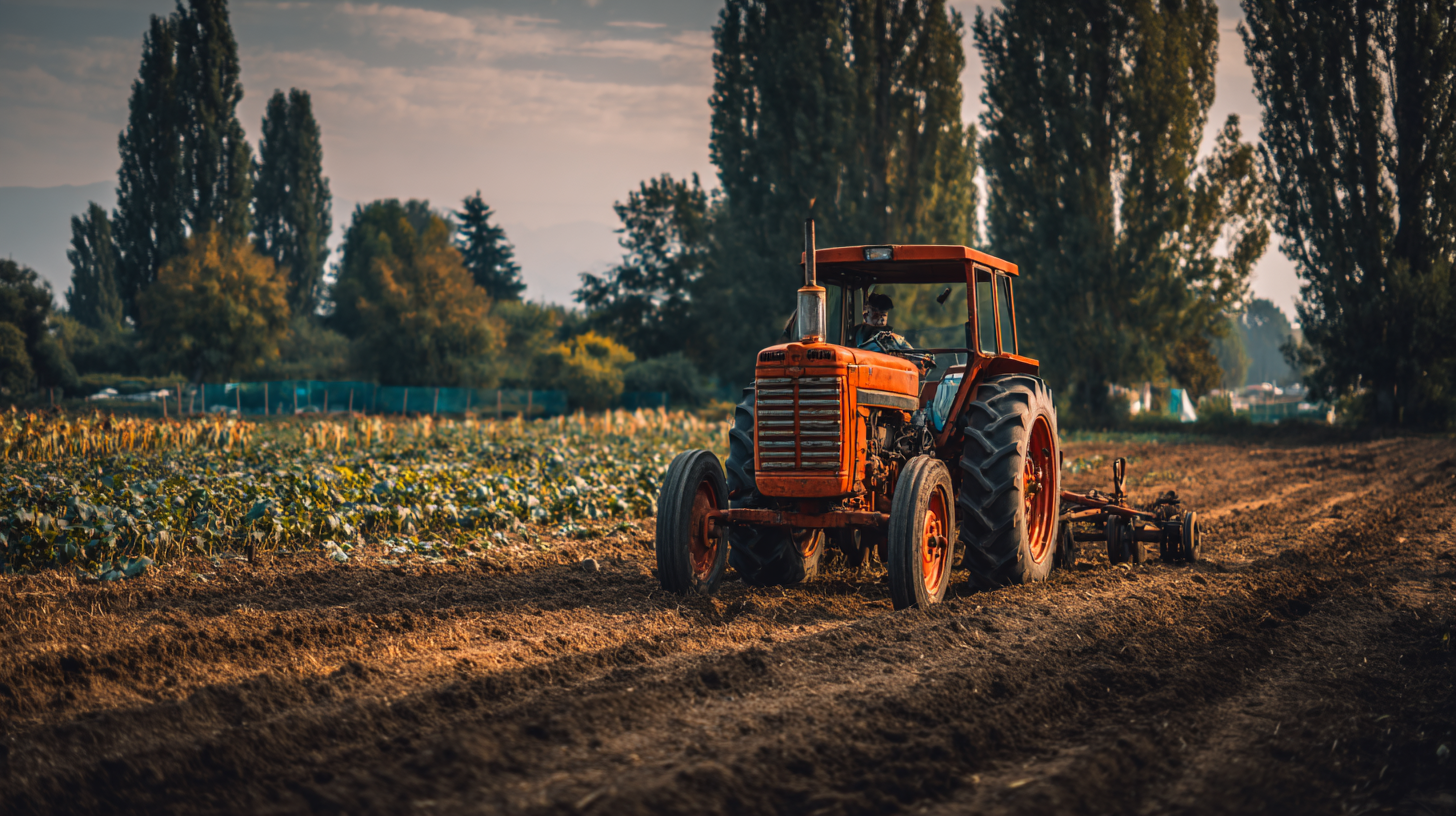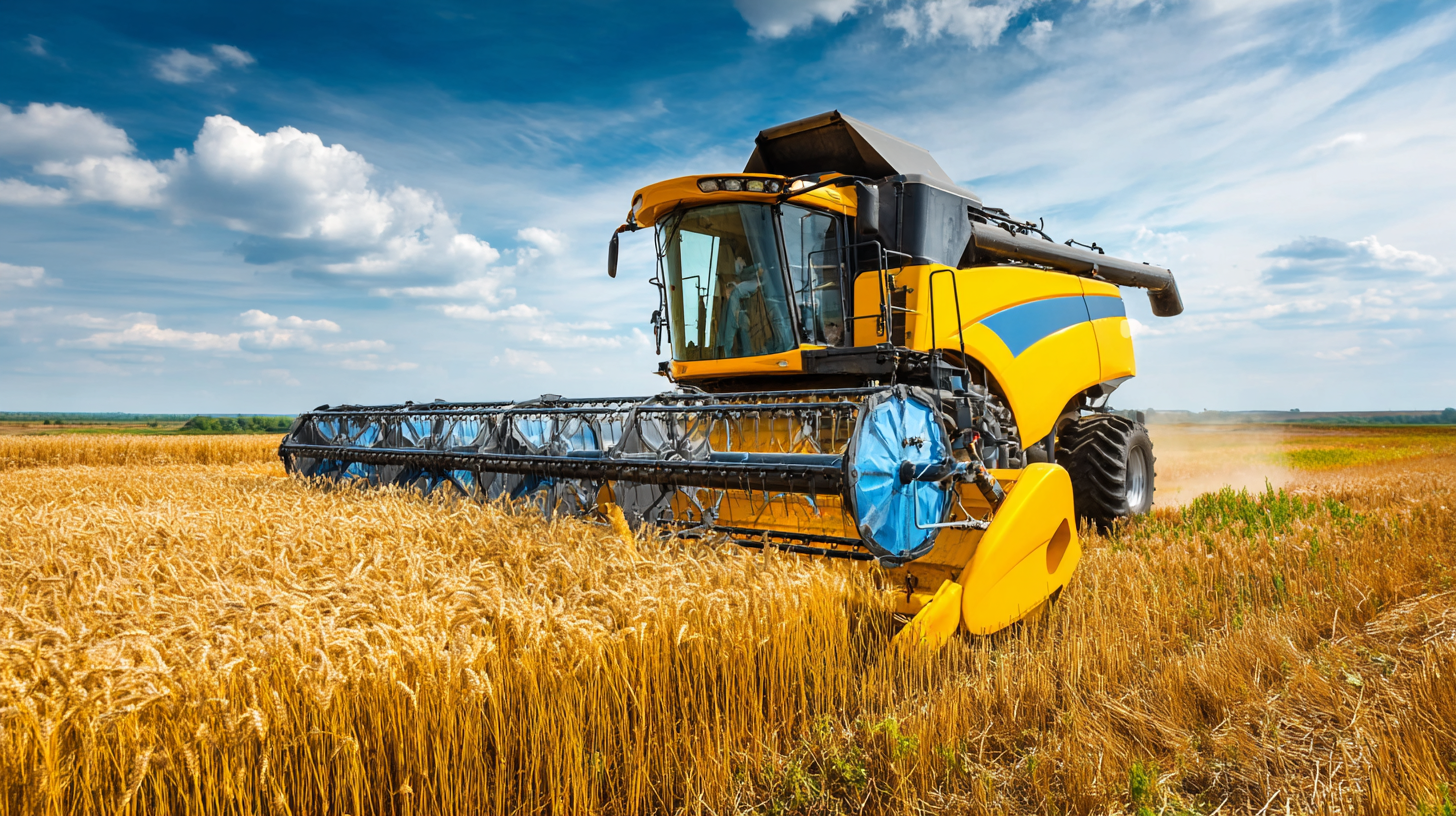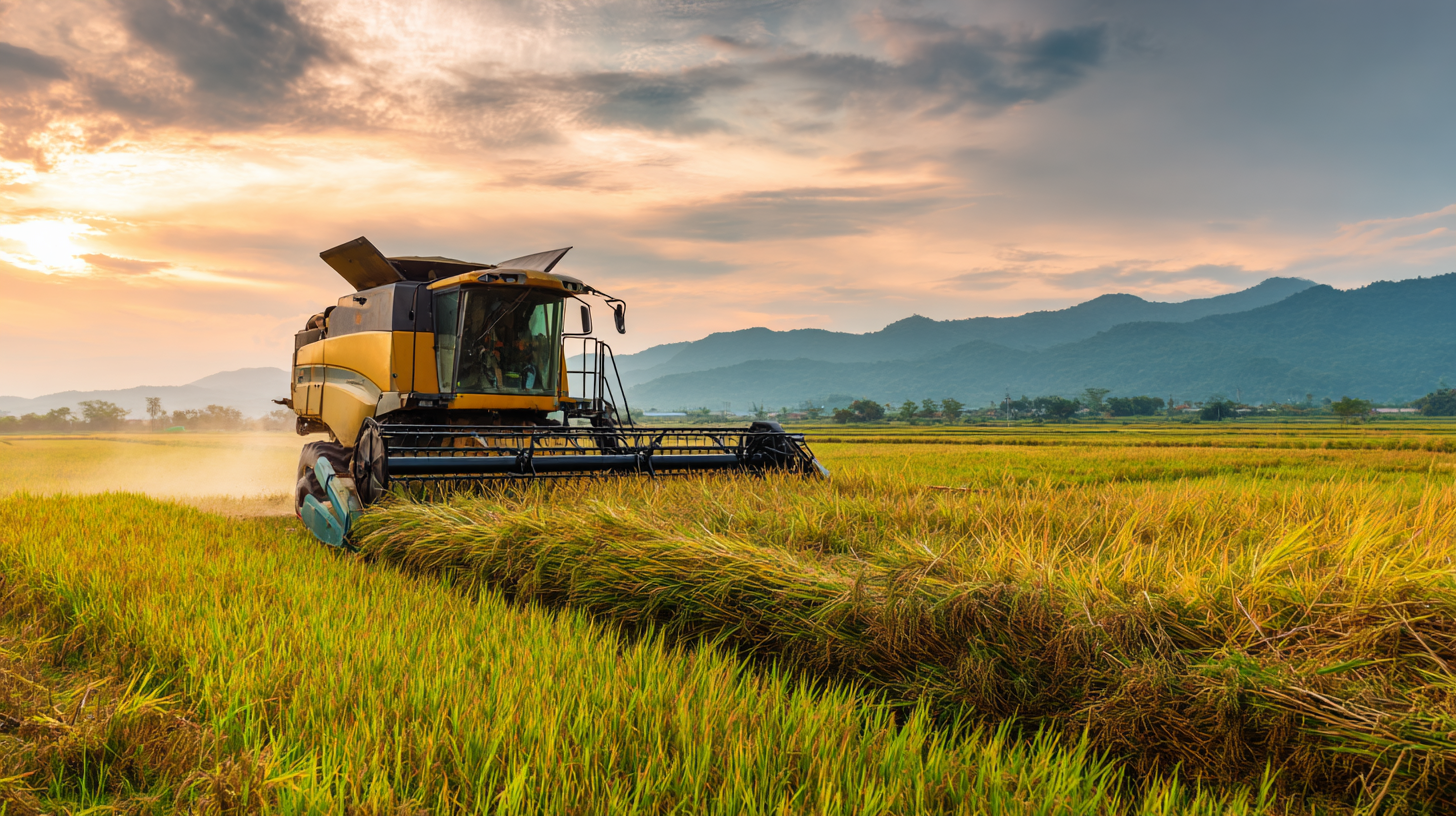In today's rapidly evolving agricultural landscape, sourcing the best agriculture equipment is vital for ensuring optimal productivity and sustainability. As the global demand for high-quality food continues to rise, manufacturers are turning to innovative technologies and practices to meet these challenges. China's commitment to excellence in manufacturing has placed it at the forefront of the agriculture equipment industry, proudly exporting world-class solutions worldwide. This blog will provide you with seven essential tips for sourcing top-notch agriculture equipment, helping you navigate the complexities of global sourcing while maximizing efficiency and performance. Whether you are a small-scale farmer or a large agribusiness, understanding these key strategies will empower you to make informed decisions that support your agricultural endeavors.

The global agricultural equipment market is experiencing significant transformation, driven by advancements in technology and evolving farming practices. As the demand for improved efficiency and productivity rises, farm management software is becoming increasingly integral to modern agriculture. It is projected that the market for such software will reach a staggering $10.27 billion by 2032, growing from $3.20 billion in 2025, at a compound annual growth rate of 18.1%. This growth reflects a wider trend of digitalization in agriculture, where data-driven decisions can markedly enhance yield and operational efficiency.
Understanding these market dynamics is vital for sourcing the best agricultural equipment worldwide. Data analytics allow farmers to monitor conditions, optimize resources, and predict market trends effectively. Companies are increasingly investing in smart farming solutions that integrate IoT technology, artificial intelligence, and data analytics. By harnessing these tools, farmers can better navigate the complexities of global supply chains and align their purchasing strategies to meet the demands of a rapidly changing market landscape. The emphasis on sustainable and efficient practices further solidifies the need for innovative agricultural solutions that not only improve productivity but also support environmental stewardship.
As modern agriculture continues to evolve, the integration of advanced technologies is becoming increasingly essential for enhancing efficiency and productivity. The adoption of precision agriculture technologies, such as soil moisture monitoring systems, is a significant trend. A recent review highlighted the evolution of these technologies from 2013 to 2024, showcasing their ability to provide accurate data that significantly improves decision-making processes in farming. By employing real-time monitoring tools, farmers can optimize irrigation practices, thereby conserving water and enhancing crop yields, which is crucial in the face of climate variability.
Additionally, the Internet of Things (IoT) and smart sensors have revolutionized agriculture by offering unprecedented connectivity and automation opportunities. Leveraging these technologies, farms can implement automated systems that adjust parameters based on real-time data, improving overall operational efficiency. For instance, automated irrigation systems can precisely control water usage, saving resources and reducing costs. Reports indicate that adopting these precision agriculture practices can lead to a 20-30% increase in productivity while significantly lowering input costs, making them a pivotal component of modern farming equipment sourcing strategies for improved sustainability.

When sourcing agriculture equipment globally, assessing supplier credibility is crucial for ensuring quality and reliability. Start by researching the supplier’s track record. Look for reviews and testimonials from other customers to gauge their reputation in the market. Trustworthy suppliers often have a history of successful transactions and satisfied clients. Additionally, verify their certifications and compliance with international standards. This information can highlight their commitment to quality and ethical practices.
Engaging in direct communication can also provide insight into the supplier's credibility. Ask about their warranties, and after-sales support. A reputable supplier should be transparent and willing to address any concerns you may have. Furthermore, visiting their facilities or attending trade shows where they exhibit can deepen your understanding of their operations and product range. Such due diligence ensures that you partner with suppliers who not only meet your equipment needs but also align with your business values.

When considering the procurement of agricultural equipment, understanding the cost-benefit analysis of imported versus locally sourced equipment is critical, especially for countries like Costa Rica. On one hand, imported agricultural equipment often comes with advanced technology and superior efficiency, potentially increasing productivity significantly. Farmers may initially be drawn to these advanced machines due to their high performance and reliability, which can lead to improved crop yields.
However, it is important to weigh these benefits against the costs associated with importing. Importing equipment can involve substantial shipping fees, taxes, and potential tariffs, which can inflate the overall price. Additionally, local equipment tends to have lower maintenance costs and more accessible repair options, as parts are readily available and technicians are familiar with the machinery. Supporting local manufacturers can also contribute to the local economy, promoting job creation and sustainability. Thus, while imported machines can provide immediate advantages in functionality, a long-term perspective might favor locally sourced options to achieve a more balanced and economical farming operation.
| Equipment Type | Imported Cost (USD) | Local Cost (USD) | Estimated Lifespan (Years) | Maintenance Cost (Annual USD) | Benefits |
|---|---|---|---|---|---|
| Tractor | 25,000 | 20,000 | 10 | 1,500 | Durable, high power output |
| Plow | 3,500 | 2,800 | 15 | 300 | Versatile, easy to repair |
| Harvestor | 45,000 | 38,000 | 12 | 2,000 | High output, efficient |
| Irrigation System | 10,000 | 8,000 | 20 | 600 | Water-efficient, scalable |
| Fertilizer Spreader | 2,800 | 2,200 | 10 | 250 | Even distribution, durable |
When sourcing agriculture equipment internationally, understanding the key regulatory considerations is crucial for ensuring compliance and a smooth procurement process. Different countries enforce varied regulations related to safety standards, import duties, and environmental impact. It is essential for businesses to familiarize themselves with the local laws of both the exporting and importing nations. Compliance with international trade agreements, such as tariffs and quotas, can significantly impact costs and timelines, making thorough research and preparation vital.
Additionally, ensuring product certification and quality assurance is paramount. Many regions require specific certifications for agricultural machinery to guarantee that they meet safety and performance standards. Businesses should verify that their suppliers can provide the necessary documentation to prove compliance with both local and international regulations. This not only helps avoid penalties but also builds trust with consumers who demand high-quality, reliable equipment. By navigating these regulatory landscapes effectively, companies can not only streamline their sourcing process but also enhance their reputation in the global agriculture market.